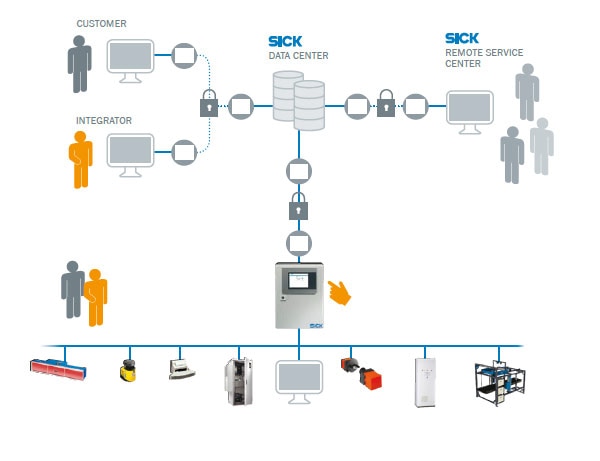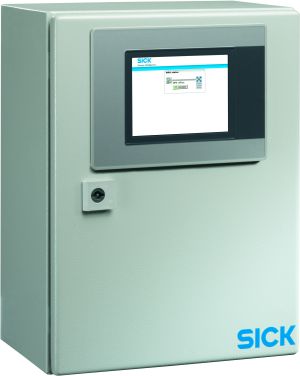The control station of a coal-fired power plant receives an alarm signal. A gas analyzer is supposed to keep harmful emissions to a minimum, although this clearly doesnt seem possible at this very moment. The problem has to be rectified quickly - not only to avoid wasting valuable resources, but also to prevent the facility from being shut down due to official requirements. Thanks to web-based remote maintenance via Remote Services from SICK the device parameters in Brasil can be set in Germany and the facility runs.

SICK offers with its Remote Services support for facility commission, remote maintenance, device data analysis, transfer of new parameters, inspection of online machine log books, deletion of errors, and verification of measurement data. Data , provided by intelligent sensors form the basis; they can be evaluated, checked and processed around the globe. What might sound modern to everyone else is practically a tradition for SICK. The process automation sector in particular has already been relying on remote maintenance for over ten years. It started in the 1990s via simple point-to point connections and analog telephone lines, before continuing with basic, first generation mobile modems. What was always missing, however, was any kind of connection logging or secure encryption resources. Since 2013, SICK has been taking care of its customers using its very own Remote Service platform via highly secure Internet connections or - if there are no broadband connections available on-site, for example - even 3G mobile connections.
Global support through a data-based service

Quick, qualified, and comprehensive advice and problem-solving solutions provided online by competent experts instead of high travel costs, extensive setup resources, and significant time delays: These are todays key requirements when it comes to providing good quality service. The clear objective is to reduce commissioning and maintenance costs and achieve a system throughput of up to 100 percent. Todays modern IT technologies and reliable device communication standards make this possible. Quick and secure Internet connections, tamperproof authentication methods, and intelligent sensors and controls are the cornerstone of SICK Remote Services - the comprehensive range of services for supporting sensors and systems online.
High priority for data safety
Internet-based remote maintenance connections to SICK are established exclusively by users themselves via highly encrypted data channels in line with HTTPS and SSH authentication standards. The SSH protocol ensures that the data is encrypted with 256-bit encryption while passing from the customer to the service technician, so external access to the customer network is virtually impossible. In addition, all communication by service technicians in the cloud is logged to create further transparency.

Increasing demand for remote maintenance
 Jan Gläser, Product Manager Service at SICK
Jan Gläser, Product Manager Service at SICK
More and more systems are being fitted with a SICK Meeting Point Router as standard. In the years since the financial crisis, we have seen significant increase in the demand for remote maintenance as well as a much wider acceptance of the service, notes Jan Gläser, Product Manager Service at SICK. In the event of a fault, the SICK helpdesk can gain access immediately via remote maintenance. SICK uses its own service platform to provide a secure connection to the Internet and its teleservice. It is flexible to configure, suitable for a wide range of customer requirements and networks, it supports a variety of different protocols, and can be used with most SICK products.

SICKs Meeting Point Router functions as a firewall in the customers machine network. As a remote gateway to the sensors, analyzers, PCs, or HMIs, it offers a secure and physical barrier between the networks. Touching the touchscreen activates remote maintenance and turns it securely back off again. The Meeting Point Router does not permit any external connections to access the network. The packet firewall actively prevents any third-party access and only transfers the ports that are actually necessary for the remote maintenance session. The Meeting Point Router is also available in a LAN version for network integration, and a 3G version for location-independent applications.
- Product information: Remote Service, SICK MPR Meeting Point Router
- Product portfolio: LifeTime Service from SICK
- More information: Whitepaper Security Concept for SICK Remote Service

